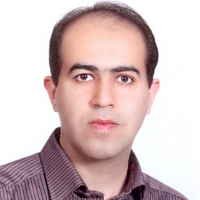Identifying Potential Areas to Dust generation using fuzzy logic and AHP in the Southeast of Urmia Lake
In addition to natural disasters such as floods, which cause great damage to the environment and human societies, the phenomenon of dust also causes irreparable damage to urban environments, transportation systems, respiratory systems, etc. Identifying Potential Dust Source Areas is considered the first step to control and prevent this phenomenon. Various researches have been conducted to identify dust sources, but most studies have relied on small-scale images. This research aims to use medium-scale satellite images to identify local areas prone to dust production. Google Earth Engine was used to analyze factors influencing dust generation, including slope, Digital Elevation Model (DEM), land use, soil salinity, Normalized Difference Vegetation Index (NDVI), soil moisture, wind speed, precipitation, and Land Surface Temperature (LST). Analytical Hierarchy Process (AHP) was used to assign weights to these elements. The resulting weights were: soil moisture (0.264), NDVI (0.208), wind speed (0.153), precipitation (0.107), land use/soil salinity (0.081), LST (0.064), DEM (0.024), and slope (0.020). The inconsistency index (0.015) indicated a high degree of consistency between the assigned weights, which is below the acceptable threshold (1). Due to the lack of ground-based air quality measurements, the Aerosol Optical Depth product (a satellite-derived measurement of airborne particles) was used to validate the resulting dust source maps. The final map showed that the potential for dust generation decreased closer to the heights of Sahand and increased closer to the lake.
-
Assessing Spatio-Temporal Changes in the Ecological Livability Index (Case Study: Tabriz Metropolis )
Sajjad Moshiri, Ahmad Nikdel Monavvar, Mohammadreza Jebraily, Iraj Teimouri *, , Bakhtiar Feizizadeh
spatial planing, -
Comparing the efficiency of Pixel-Based functions of support vector machine algorithm and Object-Based fuzzy operators in the extraction of urban built-up areas in Hamedan
Alireza Homayunfar, , Mostafa Mousapour *
Journal of Urban Ecology Researches, Spring 2025 -
Investigating the behavior of Kichik Chai Ahar river pollutants with multi-parameter and satellite monitoring of local water quality
Abolfazl Jamali, Mohammadebrahim Ramazani *, Arezoo Nejaei,
Iranian Journal of Irrigation & Drainage, -
Ecological Risk of Heavy Metals Pollution and its Relationship with Soil Physicochemical Properties in the Urmia Plain Gardens
Jaleh Afra, Salar Rezapour *, Elnaz Sabbagh Tazeh, Mohammadreza Dalalian, O. Rafieyan
Applied Soil Reseach,



